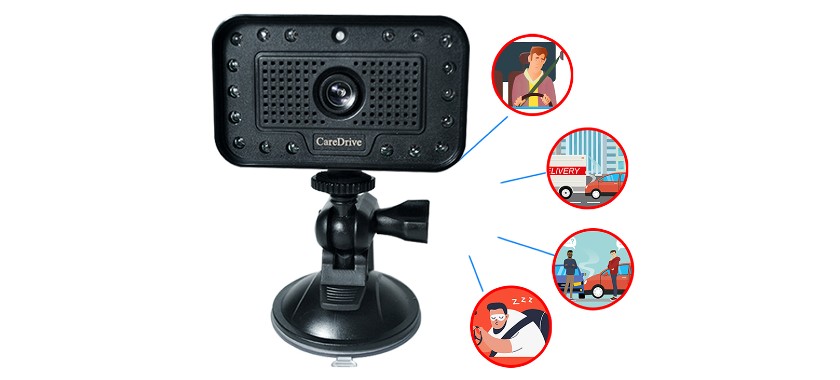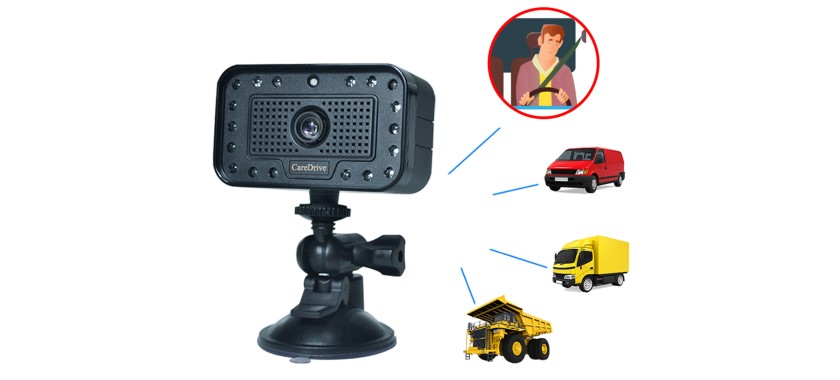This function can be greatly used to enhance enterprise management efficiency, protect driver’s life and safety, reduce operation cost and production safety risk.










The most important function of a driver fatigue monitor is to let the drivers understand they are actually in fatigue driving and raise their alertness level. Once the monitor detects the driver is drowsy, it will send a warning immediately to the driver.
Our aim is to reduce as many accidents as possible & hel[ every driver drive safely. With the help of care drive’s driver fatigue monitoring system, we can able to provide safety & can able to gain the trust and support of various clients. We are an exclusive distributor of Care drive Fatigue Monitoring System which insists on independent development and customer-oriented management system, through which we can able to maintain our quality standards.
Versions available:
– Civil standard version
– Professional version
– MR688-RS232 Version
Our Driver fatigue Monitoring System is
– The world’s only small-size Driver fatigue Monitor that works around the clock
– Worldwide patent
– Advanced face recognition and patented pupil detection technology, driver fatigue can be predicted and warned immediately
– Easy to install and adjust, suit for all vehicles
– With signal output for the fleet management system
What is fatigued driving?
Fatigued driving means a phenomenon wherein long hours of continuous driving, the drivers’ mental and physiological functions get disturbed, and drivers become eyes fuzzy and slow in reaction.
Fatigued driving has negative effects on drivers’ attention, feeling, consciousness, thinking, judgment, decision, and movement.
Driving fatigue is not a disease, but a physical self-protective reaction.
Analyze Driver Alertness, Fatigue and Efficency with AI Powered Driver Fatigue Monitoring System
A Driver Warning System is an advanced safety feature designed to alert drivers of fatigue, smoking, drinking, lane departure, over speeding, hazards on the road, thereby preventing accidents and enhancing overall driving safety.
What is a Driver Warning System?
A Driver Warning System uses a combination of sensors, cameras, and radar to monitor the driver’s behavior and surroundings. It provides real-time alerts to the driver and to the supervisor using cloud technology about fatigue, distraction, smoking, , lane departure etc. This proactive approach helps drivers react quickly to avoid any kind of mishaps.
Key Features of a Driver Warning System
- Collision Detection and Avoidance: Alerts the driver about imminent collisions with vehicles, pedestrians, or other objects.
- Lane Departure Warning: Notifies the driver if the vehicle unintentionally drifts out of its lane, helping to prevent accidents caused by drowsiness or distraction.
- Speed Limit Alerts: Reminds the driver of the current speed limit and alerts them if they are exceeding it, promoting safer driving habits.
Benefits of a Driver Warning System
- Enhanced Safety: Reduces the risk of accidents by providing timely warnings and assistance.
- Improved Reaction Time: Helps drivers react quickly to potential hazards, reducing the likelihood of collisions.
- Reduced Stress: Assists drivers in managing complex driving conditions, leading to a more relaxed driving experience.
- Increased Awareness: Keeps drivers informed about their surroundings and driving conditions at all times.
Why Invest in a Driver Warning System?
The device stores the entire footage of both cameras in real-time on the cloud which can be accessed through the dashboard/platform. this technology ensures that drivers are better prepared to handle the challenges of the road. It not only protects lives but also reduces the costs associated with accidents.
Applications
- Car, Trucks & Buses
- Mining Industry
- Airports
- Army Vehicles
- Railways / Metros
- Oil Companies
- Aviation
Features
- Non-contact mode detection
- Work all around the day
- Early warning for drowsy status
- Detect sleeping with eyes open
- Detect sudden sleep
- Detect mindlessness and scatterbrained
- Can be used by people with glasses or sunglasses
- Small size and beautiful outlook, easy to be installed and adjusted
- GPS vehicle fleet management system
Integration of both immediate warnings to the driver & fleet management
The data relating to fatigue events can be stored on an onboard memory stick for later analysis, or the data can be directly sent from the device to a GPRS communication system to provide real-time warnings when fatigue could present a safety risk.
Product installation:
Installation location: dashboard or instrument panel.
Fix the double-sided adhesive pad on the surface, then fix the host stand on the non-slip magnet with a double-sided adhesive pad.
The installation position should be within 20 degrees of eye view of the driver’s normal driving sitting position.
Adjust the lens to face the driver.
The lens shouldn’t be higher than 15 degrees and shouldn’t be lower than 30 degrees towards the driver’s face.
Insert the power adaptor into the cigarette lighter case.
Sensitivity Settings:
4 levels of sensitivity switches.
Different sensitivity level fits different drivers’ driving habits.
The more experienced drivers usually choose lower-level sensitivity.
Usually, experienced drivers can disperse some attention to other things while they are sober driving, which won’t affect their driving safety.
Power supply:
The power supply can operate from 8V to 32V, suitable for vehicles with 12V and 24V batteries, and has a good peak-voltage protection solution. It can work on the gas car with a 24V battery and can work on the diesel car with a 12V battery as well.
It has very low power consumption, under 12V battery supply, the average current is less than 100mA. Under 24V battery supply, the average current needed is only about 60mA. This is almost the same as the battery’s self-leakage and doesn’t consume any battery power.

